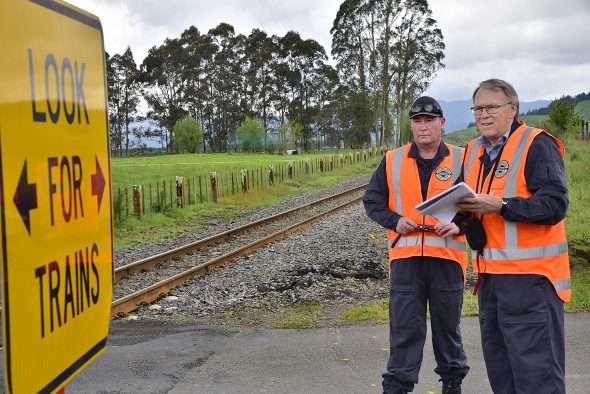
The Transport Accident Investigation Commission has completed the 2018 review of its Watchlist, which draws attention to its most pressing safety concerns.
The five items have all been updated to reflect recent developments.
[October 2018: A new item, Navigation in pilotage waters, was added to the Watchlish.]
Robinson helicopters: mast bumping accidents in NZ
The Transport Accident Investigation Commission is concerned about the number of accidents in New Zealand in which Robinson helicopters have experienced ‘mast bumping’. These accidents have raised concerns about the risks of flying these helicopters in the mountainous terrain and weather conditions that are common in New Zealand.
Updated content:
- Update of actions taken by Robinson Helicopter Company
- Reference to CAA leading a project to asses the use of helicopter flight data recorders
- Reference to CAA direction of training for pilots of R22 and R44 helicopters.
Safety for pedestrians and vehicles using level crossings
Commission investigations have highlighted safety improvements that could have been, or should be, made for road vehicles or pedestrians using level crossings. Recent inquiries have found ambiguities in who is responsible for the safety of pedestrians crossing rail lines, a particular concern in metropolitan areas with growing patronage, and growing frequency of trains. Other inquiries have shown that changes to rules and standards for road vehicles such as permissible lengths and clearances are incompatible with the conditions at some level crossings such as sight lines and road camber. The potential remains for serious accidents to continue to occur as a result of these problems identified through our inquiries.
Updated content:
- Number of level crossings that have short stacking distances. The numbers given are as supplied by KiwiRail in August 2018. KiwiRail has redefined the criteria for those level crossings that now come within the classification of ‘high-risk stacking distance’. The new definition has resulted in an increased number of level crossings falling into this category.
Technologies to track and to locate
Across the air, rail, and maritime transport modes, tracking and locating technologies offer ways to improve people’s chances of avoiding or surviving an accident or incident and ensuring they can be found. Transport Accident Investigation Commission inquiries in all three modes have suggested opportunities exist for New Zealanders to get greater benefit from the life-saving technologies available to them. We encourage transport regulators to educate operators of the significant safety advantages of using the most technologically advanced tracking and locating devices that are reasonable and affordable, and to regulate for this in some circumstances.
Updated content:
- Aviation — recent amendment to civil aviation rules
- Martime — development of AIS technologies
- Rail — release of report RO-2017-101
- Reference to worksite protection
- Addition of final paragraph
Recreational boat users: essential knowledge and skills
Strategies to promote safety in New Zealand’s recreational boating sector focus on encouraging self-reliance and skipper responsibility through safety awareness and education. The Transport Accident Investigation Commission’s view is that the system is flawed because it relies on users knowing the rules, regulations and bylaws, but does not require them to demonstrate such knowledge before taking a craft on the water. This situation is anomalous with the aviation and road sectors. In 2009 we recommended that the Secretary for Transport address this issue. The recommendation remains open.
Updated content:
- recent fatality numbers (footnote 3)
Substance use: regulatory environment for preventing performance impairment
The detrimental effects of drugs and alcohol on cognitive abilities are well documented. International research suggests the likelihood and severity of accidents increase if people responsible for performing safety-critical tasks use drugs or alcohol. In the New Zealand air, rail, and marine accidents investigated by the Transport Accident Investigation Commission, the consumption of alcohol or use of other performance impairing substances recurs as a contributing factor or a potential impediment to survival. Since the Commission first placed this item on the Watchlist, some progress has been made in legislating for the regulator to undertake non-notified drug and alcohol testing of commercial maritime operators. However more still can, and should, be done.
Updated content:
- reference to newly released inquiry (RO-2015-103)
- description of the steps in an effective employment testing regime
- references to recommendations to KiwiRail in relation to testing
- introduction of the Maritime Transport Amendment Act 2017
